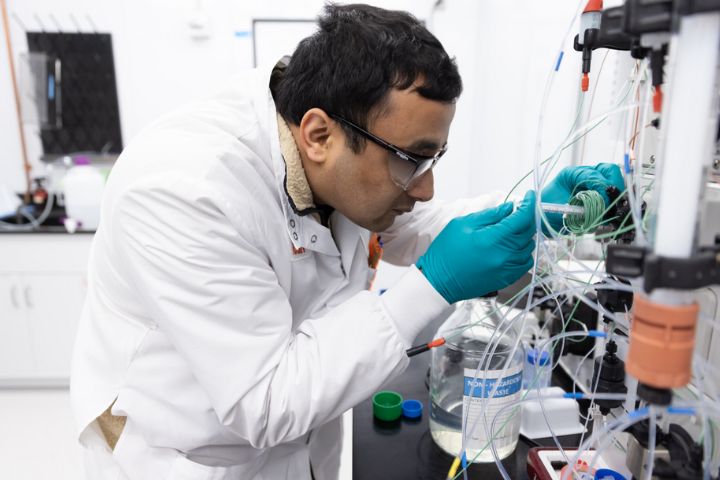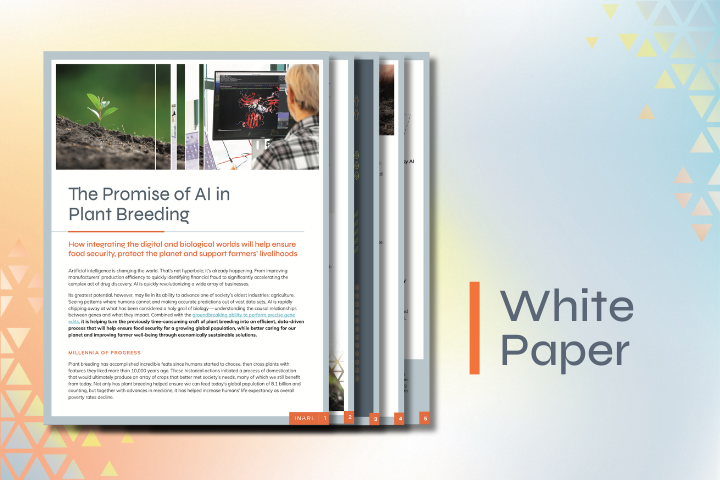Gro Alliance’s Jim Schweigert shares why the technology is a pathway to a fruitful future
New breeding technologies like gene editing come with a multitude of benefits. Agriculture leaders recognize the need for advanced breeding techniques that put better seed in the hands of farmers, strengthen market opportunities and commercial certainty, all while addressing some of the biggest climate challenges of our time.
We talked to third-generation seedsman Jim Schweigert for an insider’s insights on what gene editing means for the future of agriculture. As president of Gro Alliance, past board chair of the American Seed Trade Association (ASTA) and 2009 recipient of Seed World magazine’s Future Giant award, Schweigert is a seasoned veteran with a unique firsthand perspective on the technology’s potential and its growing adoption and integration into the ag industry.
Read on to hear, in his words, why the future is in gene editing.

Inari: What is the seed industry’s perspective on gene editing?
Jim Schweigert: It’s a key topic. I’ve been on the board of ASTA since 2009, and gene editing has been a conversation at every one of our board meetings for probably the last six or seven years. The whole industry recognizes that gene editing is a pathway to better breeding, better options and better choices for farmers and seed companies. Whether you’re a large multinational or a small startup company, gene editing is a key for the future. Gene editing is here to stay.
Inari: What role do you see gene editing playing in the agriculture industry?
Schweigert: Gene editing fits into the whole agricultural supply picture in multiple ways. One, making small edits to a plant’s genome for beneficial characteristics – in a way that is targeted and very precise – is going to speed up development of broadacre crops that are more resilient and have better yield potential. These are benefits that could be on every acre across the Midwest and across the country.
There is also benefit in smaller-acre crops where, historically, there hasn’t been a lot of innovation. The speed and precision of gene editing brings increased commercial certainty and a lower regulatory hurdle. Because of this, we can apply the technology to smaller, more niche market opportunities.
Historically, a limiting factor in the seed industry has been the cost of GMO development – 10 years to commercialization, $130 million. If you’re a startup company or new company that wants to innovate, you can’t afford to make that investment and wait for uncertain regulatory approvals to come through. This, to me, is where new breeding techniques like gene editing really create an advantage, because more competition in the market is always better.
Inari: At Inari, we talk a lot about gene editing’s potential to help address the global climate challenge. What’s your perspective?
Schweigert: There’s a really big opportunity for improving the sustainability technology index of farming. Let’s use soybean biofuel as an example. We can’t produce enough biofuel with soybeans at today’s oil profile. So, we either have to cut down a whole bunch of forests, or we have to produce more oil in every single soybean. Luckily, we can do the latter through gene editing.
Inari: What would the future look like without gene editing?
Schweigert: Without gene editing, the future probably looks a lot like it does today: You’d have a few major companies that control the market through GMO breeding techniques. We lose the ability to diversify the agricultural economy.
–
Thank you to Jim not only for the insightful conversation, but also for your commitment and dedication to building a better future for the agriculture industry.
RELATED POSTS
Inari’s Labs Achieve ‘My Green Lab’ Certification
We have a deep commitment at Inari to food system sustainability, which in addition to prioritizing food security and improved farmer well-being puts a focus on better caring for our…
An October Reflection on Food System Sustainability
By Jamie SaxonHead of Sustainability – Harvest season is in full swing in the U.S., a time of year that’s equal parts exciting, nerve-wracking and busy for farmers as they…
The Promise of AI in Plant Breeding
Artificial intelligence is already changing the world. Its greatest potential, however, may lie in its ability to advance one of society’s oldest industries: agriculture. Seeing patterns where humans cannot and…


